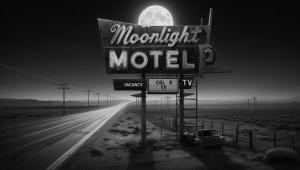We Are Miserable, Slothful Creatures. Can Technology Save Us From Ourselves?

A question: When was the last time you mailed back a DVD in a red Netflix envelope? If you answered, “It's been so long, I can't rightly remember,” I thank you for proving my point.
Netflix debuted in 1998 as the world's first online DVD rental store. After some lean times (you will recall that in the early days, the DVD format was certainly not a sure thing) the company took flight. In 2005, the company was mailing 1 million discs every day and by 2007 had delivered its billionth DVD. But the writing was on the wall; as faster internet connections became available, Netflix smartly transitioned away from its core business of DVD and Blu-ray physical media and into video on demand via the internet. The red envelopes largely faded into obscurity.
It may surprise you to learn that DVD rental is still a part of the Netflix empire, albeit a shadow of its former self. Disc rental limps along with 3 million subscribers, compared to over 125 million streaming subscribers. In the first quarter of 2018, the disc division made $56 million in profit on $99 million in revenue, compared to $11.7 billion in overall annual revenue in 2017. Relatively, not a lot of money but I guess a buck is still a buck. Who still uses the red envelopes? I suspect it is people living where the U.S. Post is faster than the internet and frankly I am glad that Netflix still serves those people.
Now, here's the thing. A DVD or Blu-ray disc can provide first-rate video and surround-sound audio. Buffs also greatly appreciate the extras that are only available on disc. Yes, streaming can deliver a good-quality product, but I think physical media is still the gold standard for movie enjoyment. Netflix's disc rental provides still more advantages over streaming. First, the disc library is about 100,000 titles, versus typically about 5,600 for streaming. Second, disc rental is relatively cheap at $5 to $12 per month versus $8 to $14 a month for streaming.
Still, in spite of advantages in quality, depth of catalog, and price, disc rental is a dying business. But, but, but you protest, what about Redbox? With 42,000 kiosks in 34,000 locations, Redbox accounts for over 50% of all disc rentals in the U.S. As of 2013, Redbox rented 3 billion discs (movies and games). But annual rentals also peaked that same year, and have declined since then. Physical media rental, and ownership, does not have a bright future. The convenience of streaming is killing it.
Yes, we would rather watch whatever happens to appear on the onscreen menu, perhaps at a relatively low bit rate, because it is convenient. The reason, your Honor, is because we are miserable, lazy creatures. In the history of audio and video, convenience has always triumphed over quality. People would rather just turn on the TV, flick through some menus, and watch whatever, instead of dropping a red envelope in the mail or, previously, rewinding a video tape.
The good news is that technology will save us from ourselves. Just as faster internet connections allowed streaming to overtake disc rental, ever faster connections are allowing ever higher quality video and audio. Maybe we could wind up with both convenience and quality.
Hmm – a postscript: When everyday streaming quality equals the best that Blu-ray can provide, it will kill off Blu-ray (because of convenience). But without that benchmark to strive for, will streaming quality continue to improve or, having beat its physical competition, will streaming quality stop there? We are, after all, slothful creatures.
























































